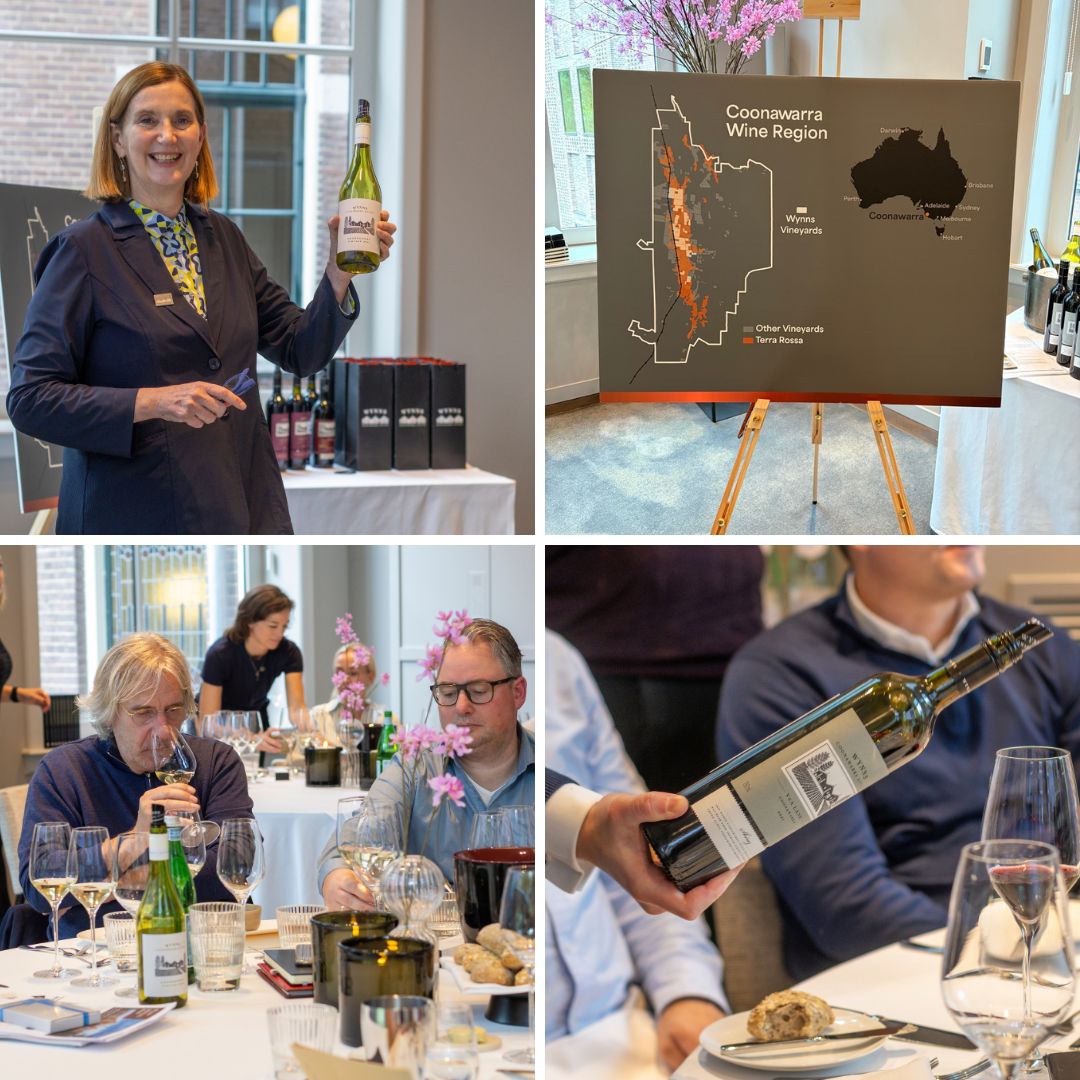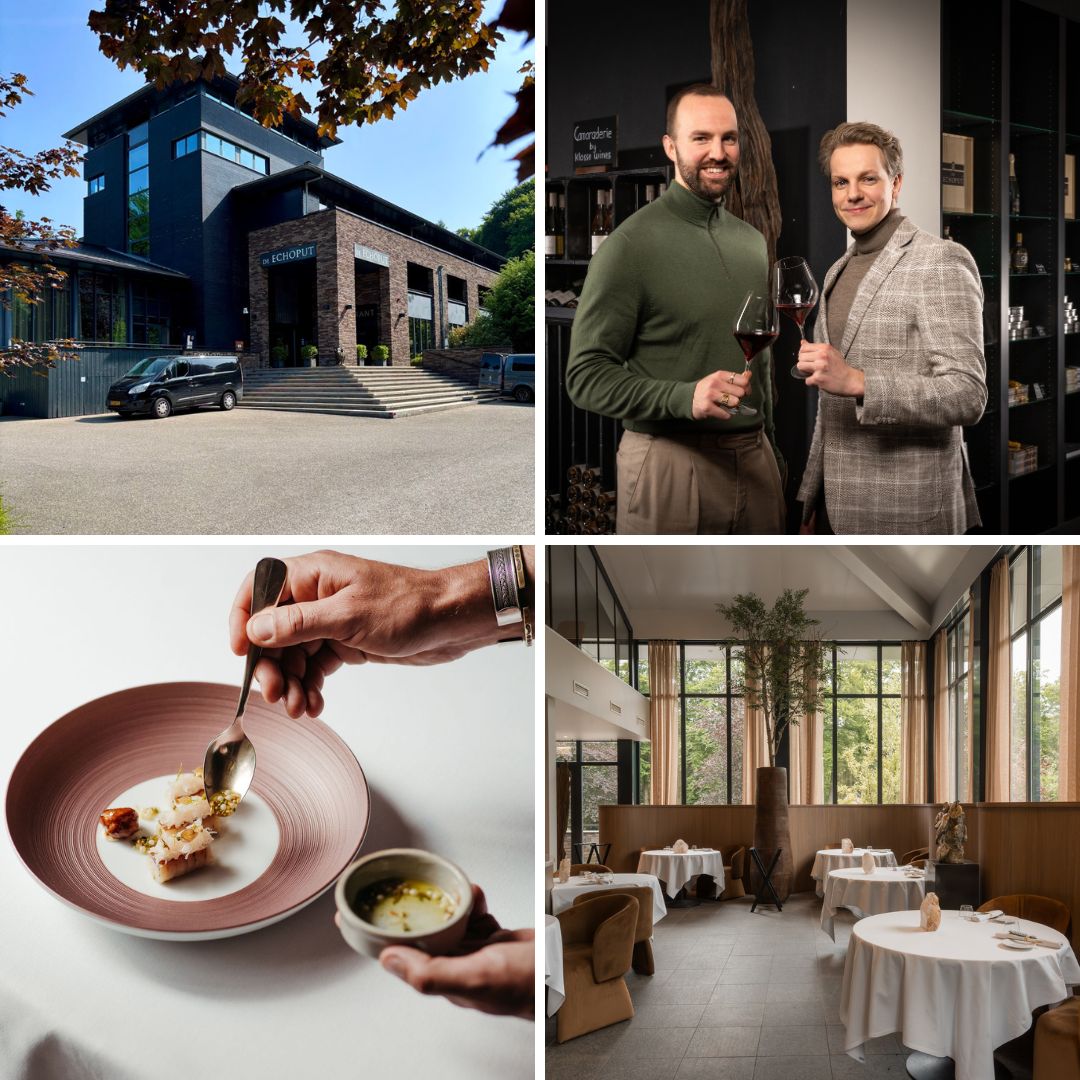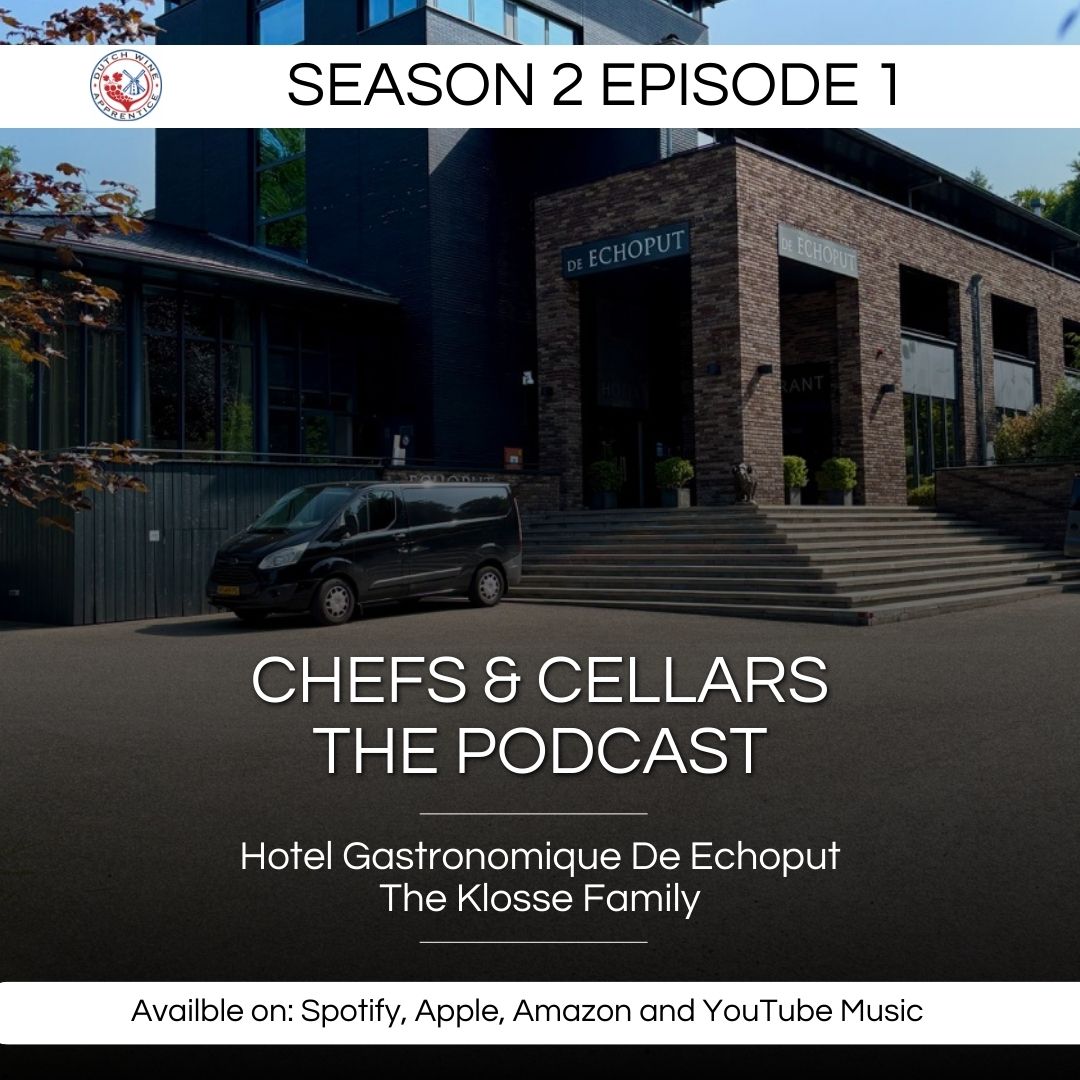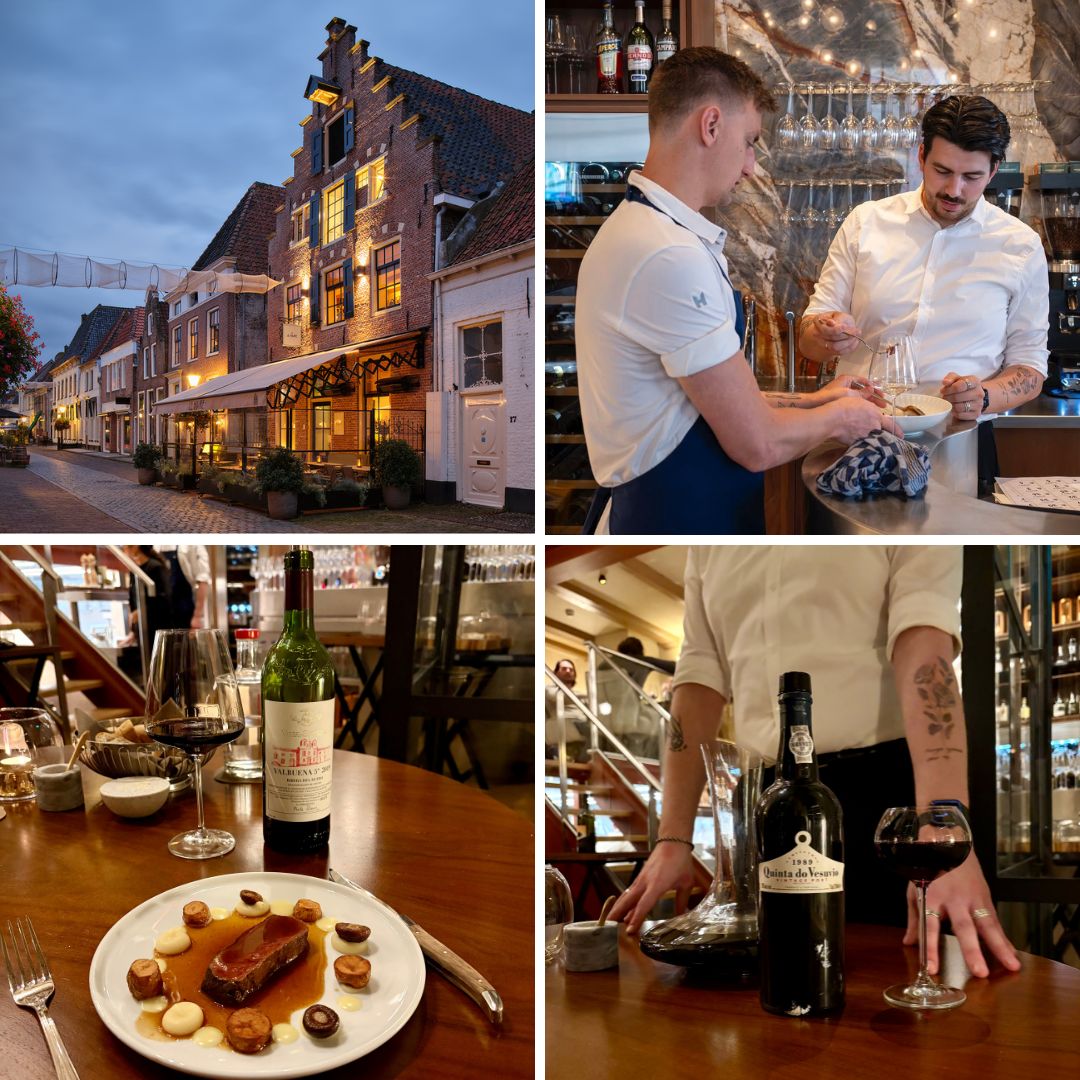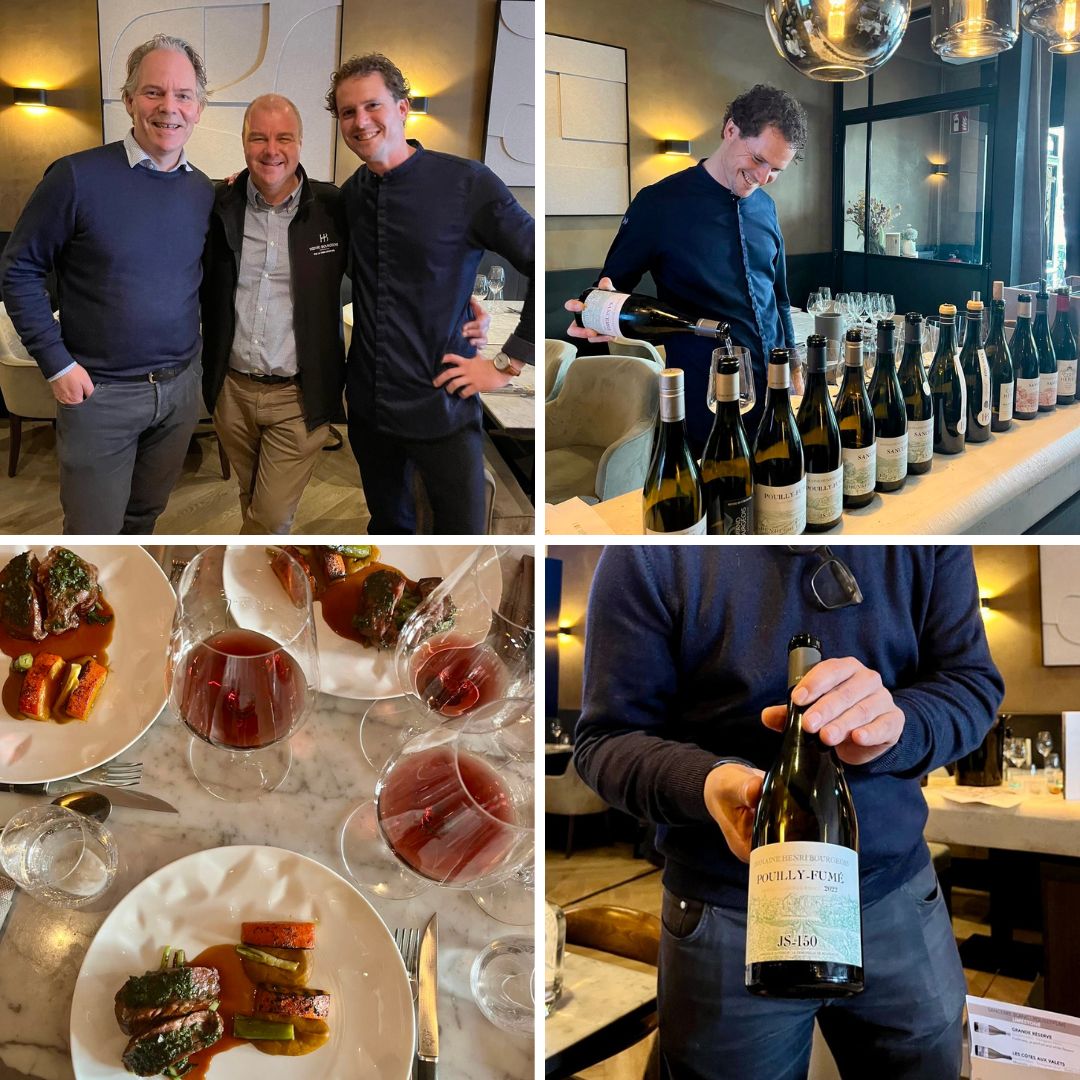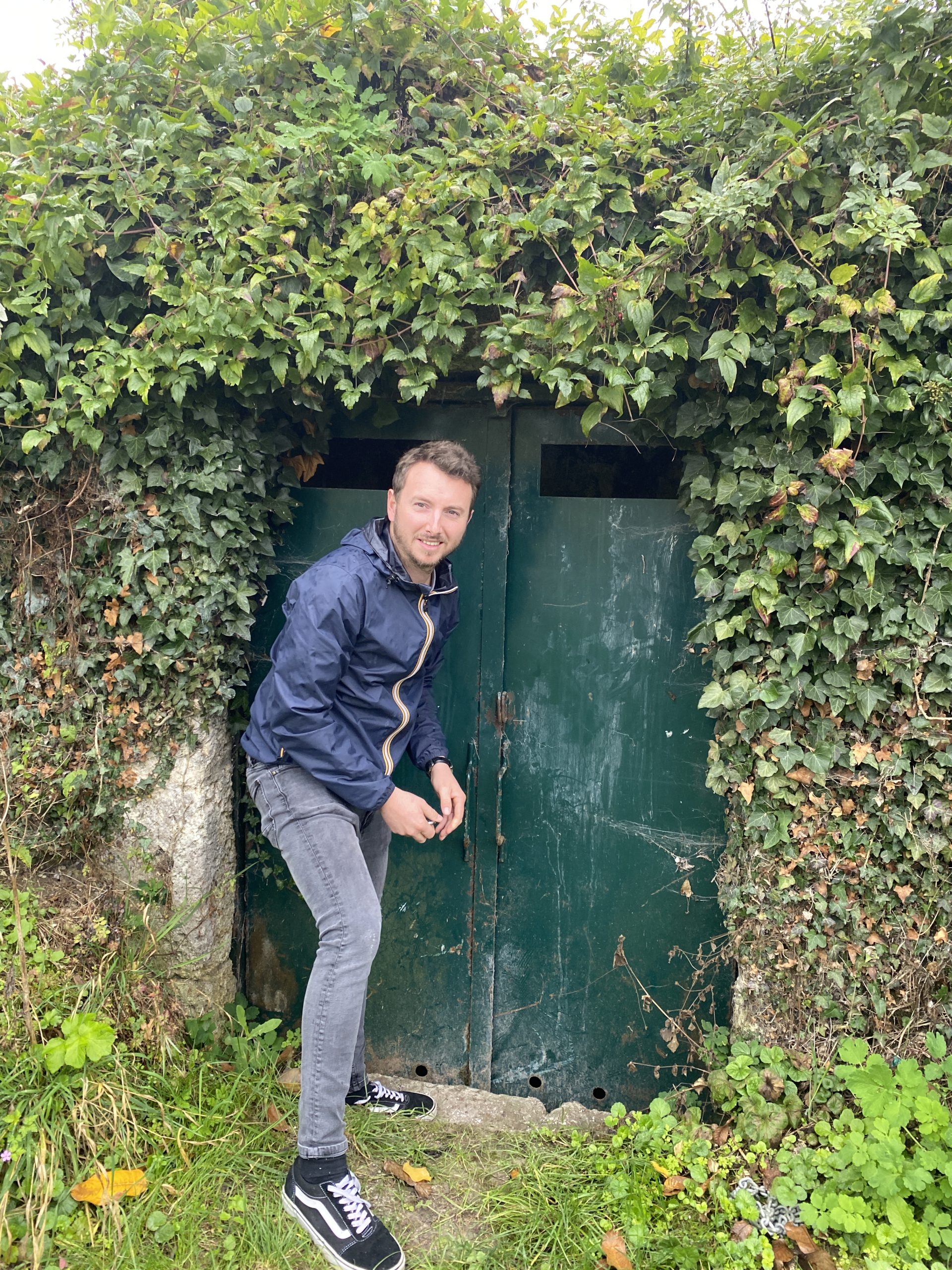Le Grand Cercle des Vins de Bordeaux Tasting 2023
On Monday, the 23rd of January, we attended the Bordeaux Tasting organized by the Grand Cercle Bordeaux at the Sofitel Legend Grand hotel in Amsterdam.
Grand Cercle is a promotion body in Bordeaux with 125 members, representing the diversity in Bordeaux. It supports the talented Châteaux by sharing knowledge, expertise, and experience with producers and promoting the Bordeaux wine story across borders with CIVB. Grand Cercle came to the center of Amsterdam for wine professionals to introduce 22 families with approximately 100 wines; some of those producers manage multiple brands in one family. Vintages offered are mostly 2020 to 2018 for red and 2021 for white, while sometimes back vintages such as 2015 or 2012 were served. Two master classes, with five tastings each, were also prepared for us to dig into the region’s diversity.
Roughly speaking, Bordeaux can be separated by the Left Bank (the west side of the river Garonne), the Right Bank (the east side of the river Dordogne), and between two rivers is called Entre-Deux-Mers, meaning ‘between two seas.’ The Left Bank has stony soil, which is suitable for Cabernet Sauvignon, while the Right Bank has cooler clay contents, which are suited to more Merlot, followed by Cabernet Franc. Grand Cercle covers both sides, but there were more Right Bank producers on the day.
We are most impressed by the high level of interest in the environment in all of Bordeaux. The tasting book provides essential information on which environmental certifications each Château has obtained, which aligns with the goal of CIVB (the Conseil Interprofessionnel du Vin de Bordeaux) ‘s target of 100% of producers practicing some form of certified environmental approach by 2030. It isn’t easy, particularly in Bordeaux, as you never know about the weather. However, climate change issues are urgent, and some markets or environmental-conscious countries are moving away from products that do not take care of the environment. We had the privilege to learn about their beautiful wine and their environmental approach at this event.
In this article, we share some stories or bottles that we are moved by the most, there was much more, but we will save that for the next time!
Right Bank
Below you will find the wines we tasted for this section of Bordeaux.
Right Bank refers to the area of the east side of the river Dordogne and includes Saint-Émilion (and its Satellites), Pomerol, Fronsac, etcetera. The soils are cooler clay rather than gravel. Hence, earlier-ripening Merlot or Cabernet Franc is the dominant variety here rather than Cabernet Sauvignon, tending to be in wines with a fuller body with rich plumy flavors.
Château La Marzelle, Saint-Émilion Grand Cru Classé
The Sioen family has run Château La Marzelle since 1998 with 17 hectares of vineyards. Interesting terroir here, with gravel and iron-rich clay, as are excellent neighborhoods Figeac and Cheval Blanc. All vineyards, comprising 80% Merlot, 15% Cabernet Sauvignon and 5% Cabernet Franc, have been organically farmed since 2008. 2020 is the first AB (Agriculture Biologique) certified vintage in addition to HVE3 and ISO14001.
Varities: 80% Merlot, 15% Cabernet Franc and 5% Cabernet Sauvignon.
Structured by highly polished and intense tannins, contributing a persistent finish, which is balanced by pronounced fruits. Lots of sand and clay in the soil giving the wine power and tannins. heavy fruit like cherry, plums and fig. Some leather and vanilla in the aftertaste as well. Powerful yet elegant mouthfeel. ABV 14%.
DWA Score: 94 (KU)
Varities: 75% Merlot, 17% Cabernet Franc and 8% Cabernet Sauvignon.
An expensive and sophisticated barrel fermentation method, ‘Vinification Integrale,’ is used. The first nose is discreet & shy (as Benjamin button effect). The aeration & patience reveals cooked plum spiced by cinnamon, hints of cheery compote & elegant odor of fresh cigar. Inviting layers of dried herbs & swift by Graphite. The palate has a grip of powerful softness & edible texture, being greatly balanced by decadent medium+ acidity & velvety medium+ tannins. Finish is long.
DWA Score: 93-95 (KU – JvE)
Varities: 75% Merlot, 15% Cabernet Franc and 10% Cabernet Sauvignon.
Opulent fruits are balanced by firm yet velvety tannins. Complex and well-Integration by ten years of aging. ABV 13.5%.
DWA Score: 93 (KU)
Château Fonroque, Saint-Émilion Grand Cru Classé
The Guillard Family bought Château Fonroque with 17.6 hectares of vineyards from the Mouiex family in 2017, whose vineyards were already certified for biodynamic farming in 2008. Plantings are 76% Merlot and 24% Cabernet Franc, and small quantities of Petit Verdot are planned over the next few years. A new gravity-flow winery was opened in 2019 that will be ready for harvest in 2020, with a greater number of small-sized oval-shaped vats and a focus on gentle extractions.
Varities: 76% Merlot and 24% Cabernet Franc.
The nose offers the elegance of fruit-driven odors. Red plum & cherry is touched by perfumed roses. The palate is refreshing with high & brisk acidity chaperoned by the pleasant grip of medium+ tannins. Finish is fresh & salivating.
DWA Score: 89 (JvE)
Château Laroze, Saint- Émilion Grand Cru Classé
Meslin family runs Château Laroze in the northwest of the town of Saint-Émilion and Guy Meslin (the person in the picture) is the fourth generation of the family, having been in charge since 1990. Their predominant grape variety is Merlot (60%), but Château Laroze is made with a blend of 5 varieties in all: Merlot, Cabernet Sauvignon, Malbec, Petit Verdot, and a large proportion of Cabernet Franc (30%), which is quite unusual for a Saint-Émilion wine as the siliceous and clay soils are suitable for Cabernet Franc, giving perfumy aromas and structure to the wines. He was among the earliest adopters of biodynamics in the Saint-Émilion region.
- Château Laroze Rouge 2020
Varities: 68% Merlot, 24% Cabernet Franc and 8% Cabernet Sauvignon.
Already approachable with juicy black fruit aromas and polished tannin, resulting in an integrated gentle mouthfeel.
DWA Score: 92 (KU)
- Château Laroze Rouge 2018
Varities: 45% Merlot, 45% Cabernet Franc and 10% Cabernet Sauvignon.
Laroze chooses to use more Merlot in this particular year compared to earlier vintages because of the mildew which merlot is the less vulnerable for.
The higher percentage of Cabernet Franc contributes to its structure and complexity, giving a range of aromas of spice, developing cigar or dried fruits such as figs and also some dark chocolate.
DWA Score: 94 (KU)
Château La Croizille / Château Tour Baladoz, Saint- Émilion Grand Cru
The De Schepper family was originally a wine merchant in Belgium. They started owning their first winery in the 1950s and now manage multiple brands, including St-Émilion and Margaux, by the talented cellar master, Jean-Michel Garcion. An unusual thing for La Croizilles is its high proportion of Cabernet Sauvignon in the plantings thanks to the limestone-clay soil and orientation getting full exposure resulting in full ripeness. Based on the exceptional terroir, use of cutting-edge technology, and respect for the traditional production method, both Château La Croizille and Château Tour Baladoz are destined to be promoted to Grand Cru Classé this year.
- Château La Croizille 2015
Varities: 73% Merlot, 27% Cabernet-Sauvignon.
17 months maturation in French 100% new oak barrels shows the pronounced intensity of opulent black fruit flavors, balanced with supple tannins and mouthwatering acidity. The aging on wood is pretty well incorporated with the fruitiness and tannins in the wine, lots of dark black fruit such as blackcurrant and blueberry. little bit of pepper and liquorice in the aftertaste but certainly well balanced. The harmonious palate is integrated by the seven years of aging.
DWA Score: 95 (KU)
- Château Tour Baladoz 2018
Varities: 70% Merlot, 20% Cabernet Franc and 10% Cabernet Sauvignon.
Opulent red and black fruit aromas are accessible and balanced with chalky tannins. 14.5% ABV.
DWA Score: 92 (KU)
Château de Pressac, Saint- Émilion Grand Cru Classé
Jean-François Quenin bought Château de Pressac in 1997 and produces both Saint- Émilion Grand Cru and Saint-Émilion Grand Cru Classé, with 36 hectares of vineyards. This Château is the only Saint-Émilion Grand Cru Classé today to grow six grape varieties: Merlot, Cabernet Franc, Cabernet Sauvignon, Carménère, Malbec (which is called côt or Noir de Pressac in French) and Petit Verdot. These are all perfectly planted in the areas that suits them best, thanks to the diversity of the terroir. Most of the grape varieties (almost 90%) are replanted in the last few decades.
- Château de Pressac Grand Cru Classe 2020
Varities: 70% Merlot, 15% Cabernet Franc, 10% Cabernet Sauvignon, 2% Carménère, 2% Petit Verdot and 1% Malbec.
Aged for 20 months on wood, of which 50% was new. Olfactory senses are blanketed by the dense generosity of a range of aromas, from black cherry and plum to mint, chocolate & hints of coffee. The palate is high notes from squeaky high acidity until high yet fine-grained tannins. The finish is long with the power of smoke & layers of wet wood.
DWA Score: 95 (JvE)
- Château de Pressac Grand Cru Classe 2019
Varities: 77% Merlot, 11% Cabernet Sauvignon, 9% Cabernet Franc, 2% Carménère and 1% Malbec.
20 months aging in 50% of new oak barrels. Very juicy and soft attack by ripe red and black fruit aromas. Lot of fresh fruit as razzberry, unripe cherry and some yogurt tones as well. Bit spicy but yet very elegant and fresh in the aftertaste.
DWA Score: 93 (KU)
Château Dalem, Château de la Hustle, Fronsac
Fronsac is on the best limestone terror of the Right Bank. The climate is a bit cooler here than in Saint- Émilion, both Château Dalem and Château de la Hustle are owned by Brigitte Rullier-Loussert. She has 35 hectares of vineyards in the region, planted with Merlot and Cabernet Franc.
Varities: 90% Merlot and 10% Cabernet Franc.
The nose is blanketed by the warmth of smoked cherry & plum. Notes of cassis & tobacco are sparkled by hints of dark chocolate. The palate is tight with medium+ fresh acidity balanced by medium+ fine-grained yet gritty tannins. The finish leaves a sense of complexity. Wine of a masculine character.
DWA Score: 96 (JvE)
Varities: 90% Merlot and 10% Cabernet Franc.
Olfactory senses are fragranced by a delicate mixture of black & red fruit. The second nose is seasoned by notes of dried Tuscan leather, mint chocolate & dash of dried clay. The palate is rich with well-integrated brisk medium+ acidity & silky yet tight grip medium+ tannins. Long finale. An iron fist in a silky glove. Wine with a feminine character.
DWA Score: 97 (JvE)
- Château de la Hustle 2019
Varities: 95% merlot and 5% Cabernet Franc.
Short aging on 30% new oak barrels. Malolactic fermentation had found place inside the barrels, which gives the wine a fresh and fruity character. Lots of blackcurrant and unripe cherry as well as some light vanilla tones in the aftertaste. tannins still a bit rough so we would store the wine for few more years.
DWA Score: 87 (MC)
Château la Rose Perrière, Lussac Saint-Émilion
One of four St-Émilion’s junior neighbors, Lussac Saint-Émilion, is known collectively as the Satellites. All four AOCs ripen a little later than St-Émilion, meaning that their tannins used to be a little more rustic, and their acidities are a little higher, but this could be positive for the recent vintage.
Jean-Luc Sylvain from Château la Rose Perrière, the fourth generation of this family, and his children have worked together to express its terroir, with the philosophy to respect the environment and use a natural product as much as possible. Their properties are already certified as organic farming and use only grass, and organic fertilizers.
- Château la Rose Perrière Blanc 2020
Varities: Sauvignon Blanc, Sémillon and Muscadelle.
After manually harvesting and sorting grapes, barrel fermentation and lees aging are carried out. Pure and fresh, with floral and fresh green fruit aromas. Additional body lifted by barrel fermentation and lees aging is balanced with refreshing acidity with tension.
DWA Score: 91 (KU)
Left Bank
Below you will find the wines we tasted for this section of Bordeaux.
Left Bank refers to the west side of the river Garonne and includes Medoc, Pessac-Léognan, Graves, Sauternes, etcetera. The Left Bank has stony soil with warmer temperatures, which is suitable for late-ripening Cabernet Sauvignon, leading to wines with structure with distinct characteristics of the variety.
Château Haut Bacalan, Pessac-Léognan
Pessac-Léognan is the compact appellation located the south of the town, Bordeaux, having both the gravel soils and the moderating effect of the river like the top communes of the Médoc, producing both high-quality wines as well, but somehow less recognized than they should be.
Château Haut Bacalan with 8 hectares of vineyards lies in the town of Pessac and is owned by Frédéric Gonet. The château was farmed organically but they had to stop it in 2013, after the difficulties of rainy vintage, but they have not given up on organic farming by any means, and with further efforts, the vineyards are to be certified again this year.
- Château Haut Bacalan 2014
Varities: 55% Merlot, 40% Cabernet Sauvignon and 5% Petit Verdot.
Hand harvested, fermented in stainless-steel tanks, and 18 months of oak aging of which 50% was new. Lots of ripe fruits in the wine such as amarena cherry, plums and raspberry. But definitely a lot of dark chocolate and coffee hints in it. Harmonious profile with developing complexity. 14% ABV.
DWA Score: 93 (KU)
- Château Haut Bacalan 2020
Varities: 55% Merlot, 40% Cabernet Sauvignon, and 5% Petit Verdot.
10 months of oak of which 50 % was new, giving the blend a lot of structure and well-balanced ripe tannins. Red forest fruits and some green bell peppers as well. a perfectly balanced wine with the right spiciness in the aftertaste. ABV 14%.
DWA Score: 91 (MC)
Entre-Deux-Mers
Below you will find the wines we tasted for this section of Bordeaux.
Entre-Deux-Mers is the second largest appellation following the Bordeaux AOC. Although 40% of the production in the region is indeed red, the white wine, typically based on Sauvignon Blanc, is registered in the AOC. The white wines are pure and fresh in style, with white flower notes, citrus, and sometimes tropical fruits, with relatively high acidity, which is perfect to drink young and approachable.
Château Sainte Marie, Entre-Deux-Mers
Château Sainte-Marie is located in the middle of the prime wine-growing Entre-deux-Mers area between the Dordogne and Garonne rivers. The ideally oriented plots stretch across two hills with perfect exposure to the sun on some of the highest land in the Gironde département.
Old vines with controlled yields, including a plot of Semillon and Merlot over 100 years old, guarantee the excellence of an ever more qualitative production.
- Château Sainte Marie 2022
Varities: 70% Sauvignon Blanc, 25% Sémillon and 5% Muscadelle.
Fresh and pure, charming Bordeaux white blend based on Sauvignon Blanc. Slightly flowery nose with some deep tones of honey. White fruit such as apple and pear and some melons as well crispy on the palate as we would expect a Sauvignon dominated wine to be.
DWA score: 89 (KU)
- Grand Vin du Château Lesparre
Varities: 80% merlot and 20% Cabernet Sauvignon.
Not so much oak aging, about 6 months just to give the wine a little touch of oak. Dark tones of figs and coffee, but the earthiness of red beetroot as well. Nice firm structure and heavy tannins in the aftertaste. already well balanced but we thought it would do the wine good to keep it in your cellar for a few more years.
DWA score: 88 (MC)
Conclusion
Well-known classified Châteaux are, of course, excellent, but Bordeaux is more than that. It was a privilege to be able to taste a wide range of wines, including some that are recently promoted to Grand Cru Classé or those in a higher price range.
We thank Grand Cercle for organizing this event. We would also like to thank Xavier Kat from Wijnkoperij Okhuysen for hosting an excellent masterclass: “What’s trending in Bordeaux”. This focused on sustainability, affordable quality and accessible wines. This showed how the region is becoming more sustainable for the future, and taught us more about other wineries and the terroirs in the Bordeaux region. A nice masterclass with a short tasting as well of the wineries from the Grand Cercle.
This event was covered for us by our own Kazumi Uejo, Martijn Coenen and Jelena van Eerdenburg on behalf of Dutch Wine Apprentice.
